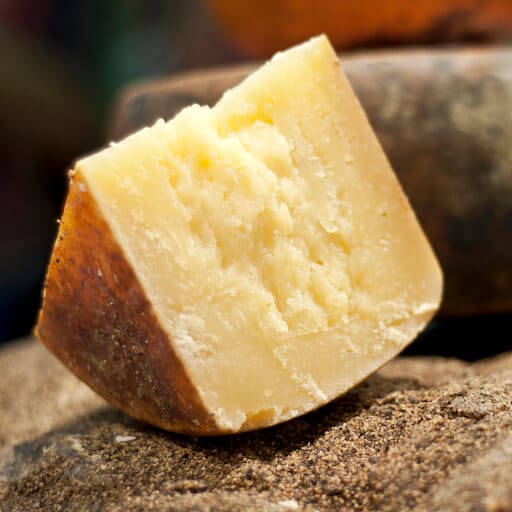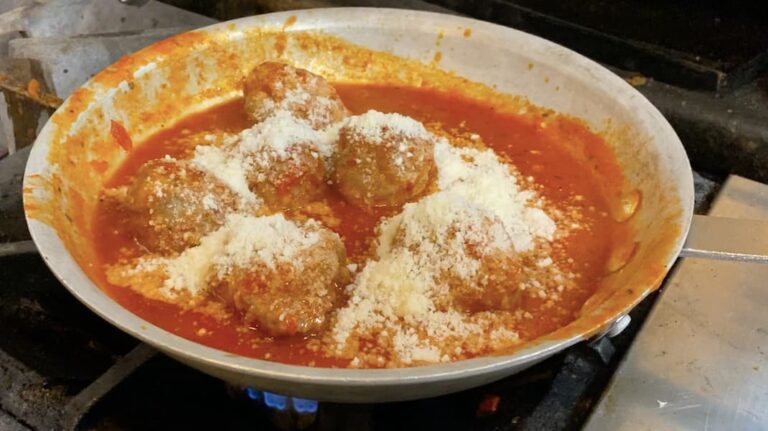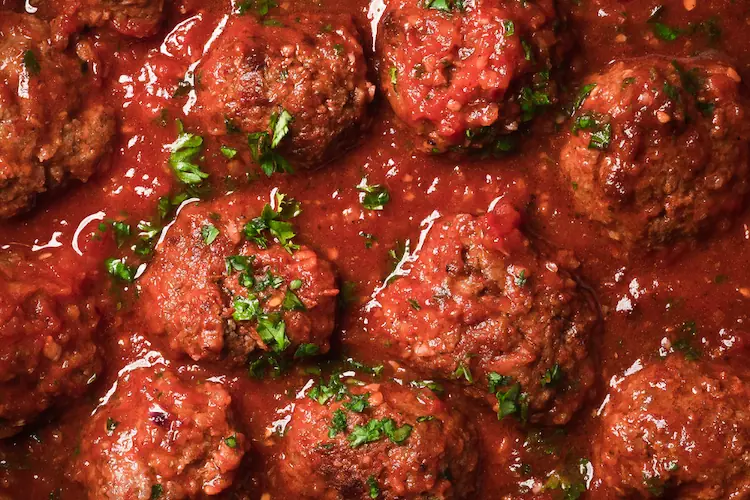Today, we’re talking cheese! Yes, please!
As a cheese lover who loves trying a variety of cheese, I’m excited to chat with you about all the various types of aged cheeses, their aging processes, and what makes each one unique.
Whether you’re a cheese connoisseur or just starting your cheese-loving journey, my guide will provide insights into the delicious world of aged cheeses.
Types of Aged Cheeses
Let’s dive into some of my favorite aged cheeses and their unique characteristics:
- Cheddar Cheese: Known for its tangy flavor and firm texture, cheddar cheese is aged anywhere from a few months to several years. The longer it ages, the sharper and more complex the flavor becomes.
- Blue Cheese: Famous for its robust flavor and crumbly texture, blue cheese undergoes a unique aging process that involves the introduction of mold cultures. It’s strong, bold, and a bit of an acquired taste, but oh-so-rewarding.
- Swiss Cheese: With its signature holes, Swiss cheese has a mild, nutty flavor and is aged for several months. Perfect for melting and snacking, it’s a versatile favorite.
- Parmigiano Reggiano: Often referred to as parmesan cheese, this cheese boasts a hard texture and a rich, savory flavor, aged for at least 12 months. It’s a staple in my kitchen, especially for grating over pasta.
- Grana Padano: Similar to Parmigiano Reggiano, this cheese is aged for a minimum of 9 months, resulting in a granular texture and a sweet, nutty flavor. Ideal for both cooking and snacking.
- Gouda: Particularly Old North Holland Gouda, which is known for its deep, caramel-like flavor after being aged for over a year. Its sweet and nutty profile is so addictive.
Cheese Pairing Ideas
Pairing cheese with the right accompaniments can really elevate your tasting experience. Here are some of my favorite pairings for each type of cheese:
- Cheddar Cheese:
- Fruits: Apples, pears, grapes
- Nuts: Walnuts, almonds
- Beverages: English ale, stout, Cabernet Sauvignon
- Accompaniments: Crusty bread, pickles, chutney
- Blue Cheese:
- Fruits: Figs, pears, apples
- Nuts: Pecans, walnuts
- Beverages: Port wine, Sauternes, IPA beer
- Accompaniments: Honey, crusty bread, dried fruits
- Swiss Cheese:
- Fruits: Apples, grapes, cherries
- Nuts: Hazelnuts, almonds
- Beverages: Riesling, Pinot Noir, lager beer
- Accompaniments: Sliced ham, whole grain mustard, rye bread
- Parmigiano Reggiano:
- Fruits: Pears, figs, apples
- Nuts: Pine nuts, walnuts
- Beverages: Chianti, Prosecco, aged balsamic vinegar
- Accompaniments: Prosciutto, olives, honey
- Grana Padano:
- Fruits: Pears, grapes, dried apricots
- Nuts: Almonds, hazelnuts
- Beverages: Prosecco, Sauvignon Blanc, Lambrusco
- Accompaniments: Salami, honey, balsamic reduction
- Gouda (Old North Holland):
- Fruits: Apples, pears, dried figs
- Nuts: Cashews, almonds
- Beverages: Amber ale, Merlot, Chardonnay
- Accompaniments: Dark chocolate, caramelized onions, crusty bread
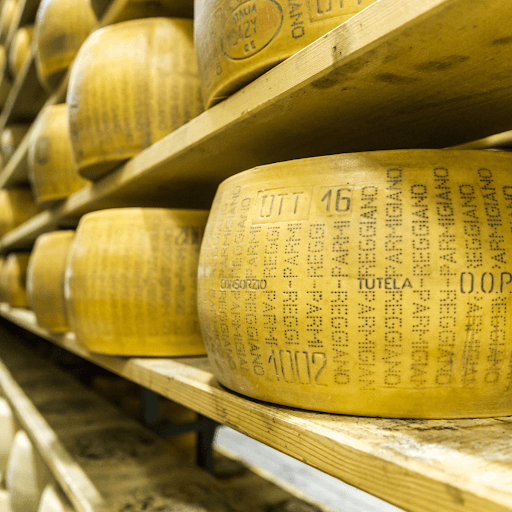
The Aging Process
The aging process, otherwise known as affinage, is crucial in developing the flavor and texture of cheese. Here’s a peek into how it typically works:
- Controlled Environment: Cheeses are stored in environments with specific temperature and humidity levels.
- Lactic Acid Development: The bacteria in cheese convert lactose into lactic acid, which helps in developing flavor.
- Time Period: Different cheeses require varying aging periods to reach their optimal taste and texture.
- Bloomy Rind and Washed-Rind Cheeses: These cheeses are treated differently during aging, either by allowing mold to develop on the rind or by washing the rind with brine or alcohol.
Fun Facts About Aged Cheeses
- Oldest Aged Cheese: Some cheeses, like Parmigiano Reggiano, can be aged for up to 36 months or more.
- Wisconsin Cheesemaker: Wisconsin is home to some of the best cheesemakers in the United States, known for their years of experience and innovative techniques.
- Cheese Aging Caves: In countries like France and Switzerland, traditional cheese aging often takes place in caves, where the natural humidity and temperature create perfect conditions for developing flavors.
- Historical Currency: In ancient times, cheese was so valuable that it was sometimes used as a form of currency or as a dowry in weddings.
Tips for Enjoying Aged Cheeses
Here are some handy tips for making the most out of your aged cheese experience:
- Cheese Pairing Guides: Pair aged cheeses with complementary foods like fruits, nuts, and wines to enhance their flavors.
- Charcuterie Board: Create a charcuterie board with a variety of aged and fresh cheeses to offer a range of textures and flavors.
- Grilled Cheese Sandwich: Use aged cheddar or gouda for a rich, flavorful twist on a classic grilled cheese sandwich.
- Au Gratin: Incorporate aged cheeses into dishes like au gratin potatoes for a deeper flavor.
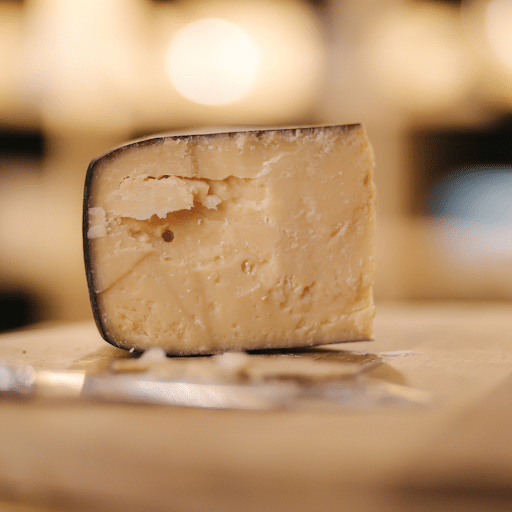
Shopping for Aged Cheeses
When shopping for aged cheeses, consider the following:
- Wide Range of Products: Look for stores that offer a variety of cheese types and aging levels.
- Freshness Guarantee: Ensure the cheese comes with a freshness guarantee and proper packaging, such as vacuum packaging or cooling packs.
- Customer Service: Choose suppliers with excellent customer service and a complete delivery guarantee.
Cheese Varieties and Their Unique Characteristics
Exploring different cheese varieties is always a fun adventure. Here are a few to try:
- Semi-Hard Cheeses: These cheeses, like Monterey Jack and Asiago, have a firm yet slightly pliable texture.
- Soft Cheeses: Brie and Camembert have a soft texture and are aged for a shorter period.
- Sheep’s Milk Feta: Known for its intense flavor, this cheese is aged for a few months to develop its characteristic tangy taste.
- Goat Cheese: Often aged for a few weeks to several months, resulting in a wide range of flavors from mild to robust.

Cheese Aging Terminology
Understanding the following terminology can enhance your cheese appreciation:
- Bloomy Rind: Soft, edible rind that develops on the outside of cheeses like Brie.
- Crumbly Texture: Describes cheeses like blue cheese that break apart easily.
- Firm Texture: Indicates cheeses like cheddar that are solid and dense.
- Nutty Flavors: Common in cheeses like Gruyère and Swiss.
- Robust Flavor: Strong, intense taste found in cheeses like blue cheese.
- Complex Flavor: A combination of multiple taste notes that develop over time.
Books About Cheese
As I’ve mentioned before, I love learning through reading Here are some books to help you expand your cheese knowledge:
- “The Cheese Lover’s Companion” by Sharon Tyler Herbst and Ron Herbst
- This comprehensive guide covers over 1,000 types of cheeses, offering descriptions, pronunciations, and pairing suggestions.
- “The Art of Natural Cheesemaking” by David Asher
- A detailed exploration of traditional cheesemaking techniques, focusing on natural methods without artificial additives or commercial cultures.
- “Cheese and Culture: A History of Cheese and Its Place in Western Civilization” by Paul Kindstedt
- This book delves into the historical and cultural significance of cheese, tracing its evolution from ancient times to the modern era.
- “Mastering Artisan Cheesemaking: The Ultimate Guide for Home-Scale and Market Producers” by Gianaclis Caldwell
- An in-depth resource for aspiring cheesemakers, providing technical guidance and practical tips for creating artisan cheeses.
- “The Book of Cheese: The Essential Guide to Discovering Cheeses You’ll Love” by Liz Thorpe
- A user-friendly guide that helps readers navigate the world of cheese, identifying new favorites through flavor profiles and pairing advice.
Aged cheeses offer a fascinating blend of history, flavor, and texture. By understanding the aging process and exploring different types of aged cheeses, you can elevate your cheese shopping and dining experiences.
Whether you’re enjoying a tangy blue cheese, a firm cheddar, or a nutty Swiss, each cheese brings its own unique story and flavor profile to your table. Happy tasting!

